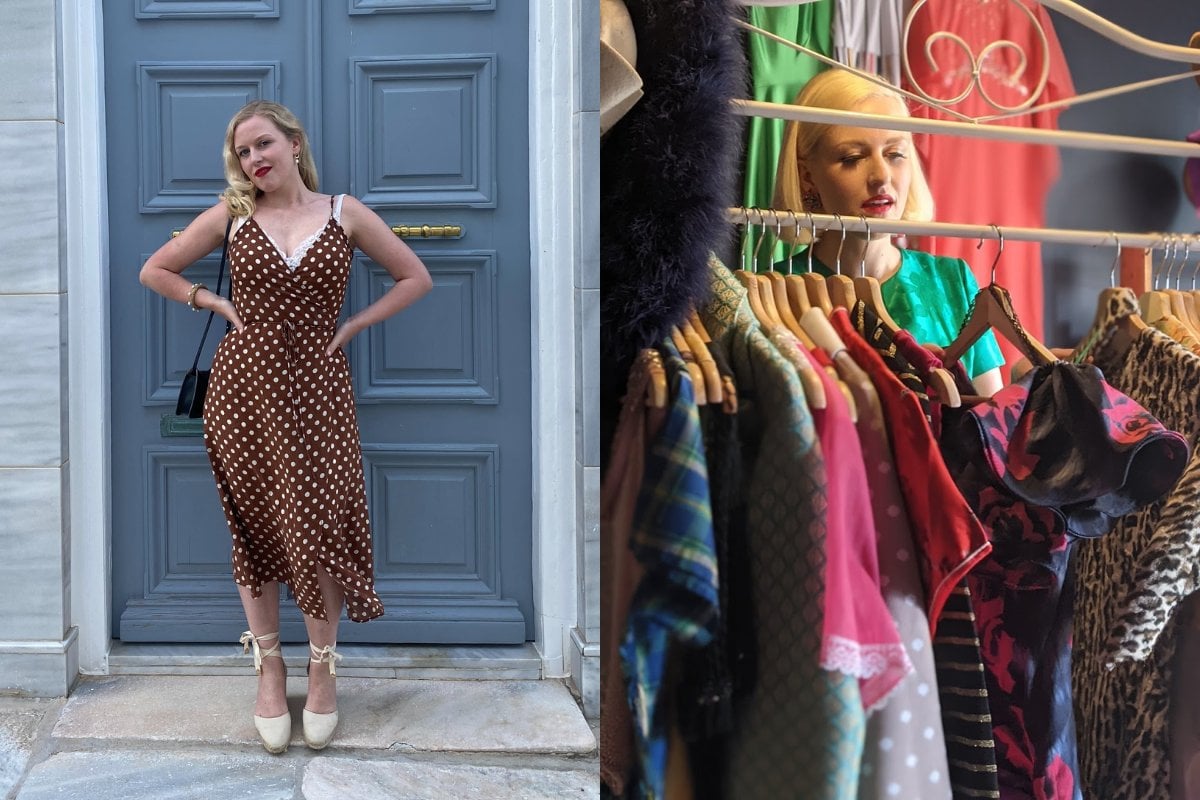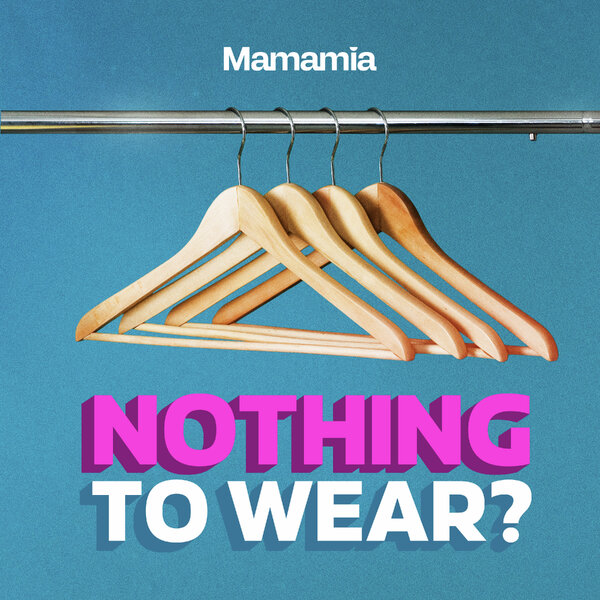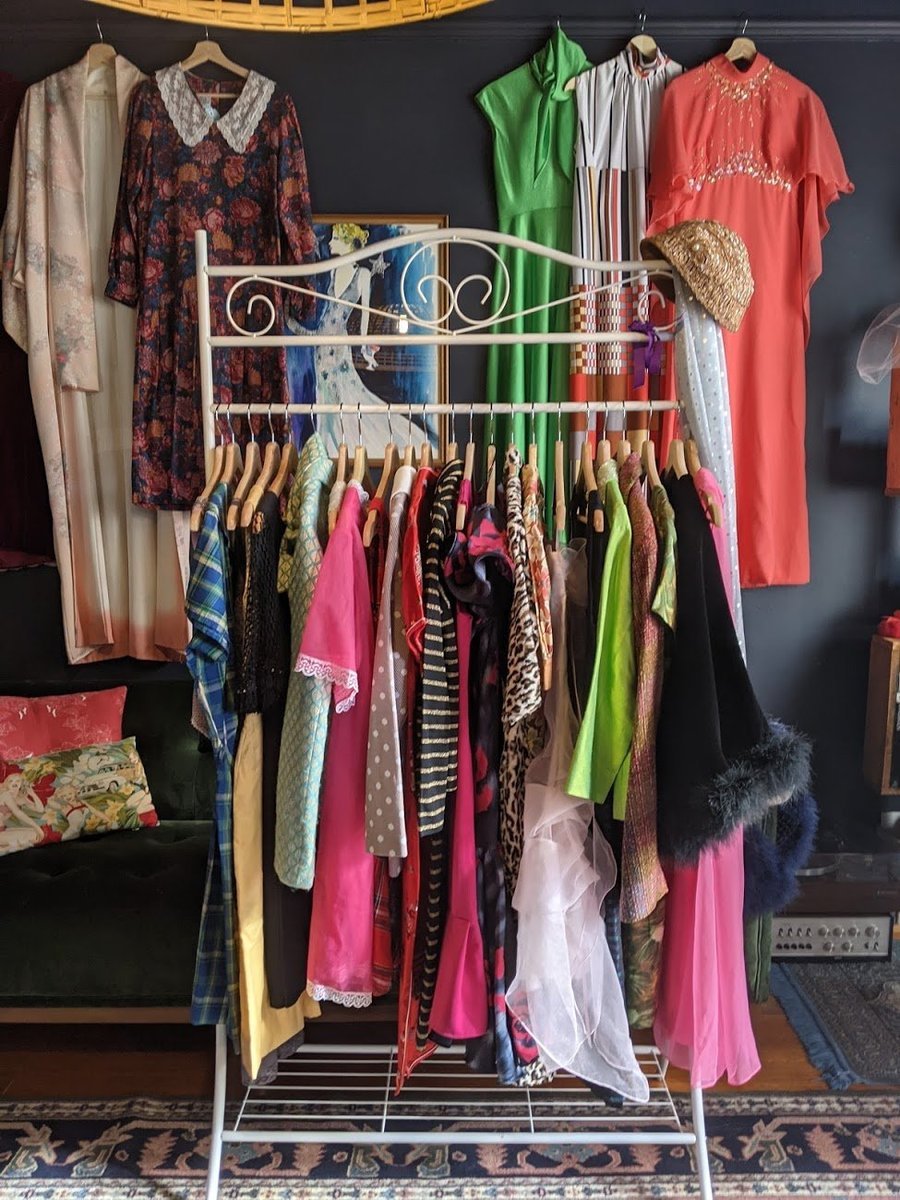
Secondhand shopping has come quite the way since I used to run my online and pop-up vintage boutique, Chez Charlotte. Nowadays it's normal for people, especially if they're Gen Z, to source their best wares from op-shops and Depop, eBay and Etsy, no doubt due to the climate crisis and increasing awareness surrounding sustainable fashion.
Watch: What shopping looks like when you're single versus when you're not. Post continues after video.
I've since closed that business but have written an upcoming book about how to find your style through wearing more secondhand. As it transpires you don't need to be in the throes of your youth, live in a big, fabulous city, look any bit old-fashioned or even know a single fact about fashion history to embrace styles from the past. Instead, all you need to know is what you suit, what you fit and be open to the treasure hunt that comes with it.
1. Know your style.
Before you get started on your secondhand style journey, it's important to decipher what kind of look you're actually trying to embody. Because op shops are so affordable, it can be tempting to go on the wrong type of sartorial tangent, buying up all kinds of bits that actually won't work in your wardrobe.
If you don't know where to start with this, I suggest first figuring out your ultimate style icon then when in the changing room reference their look, asking yourself would so-and-so buy this? If it's a no, it goes back on the rack, if it’s a yes, plus you love it and can afford it, then you have full permission to purchase and take your new old piece home with you.






























































































